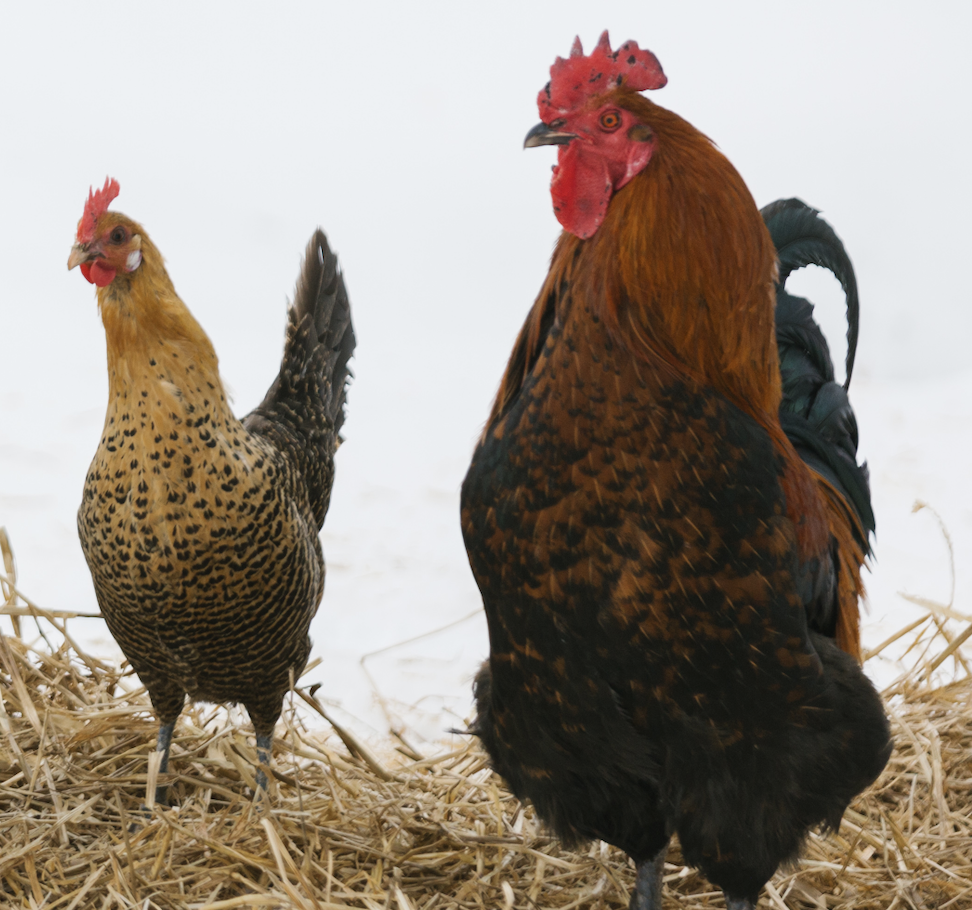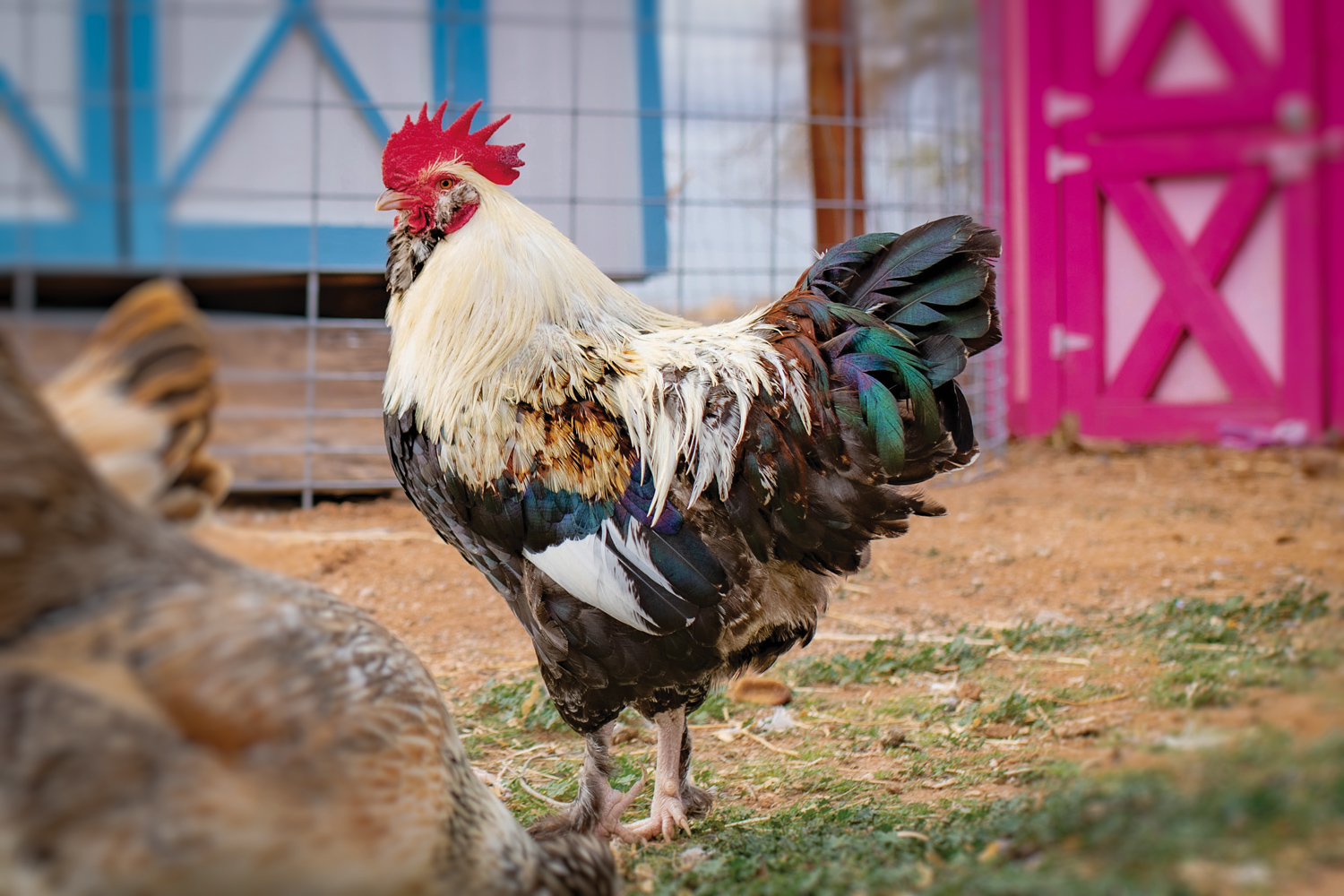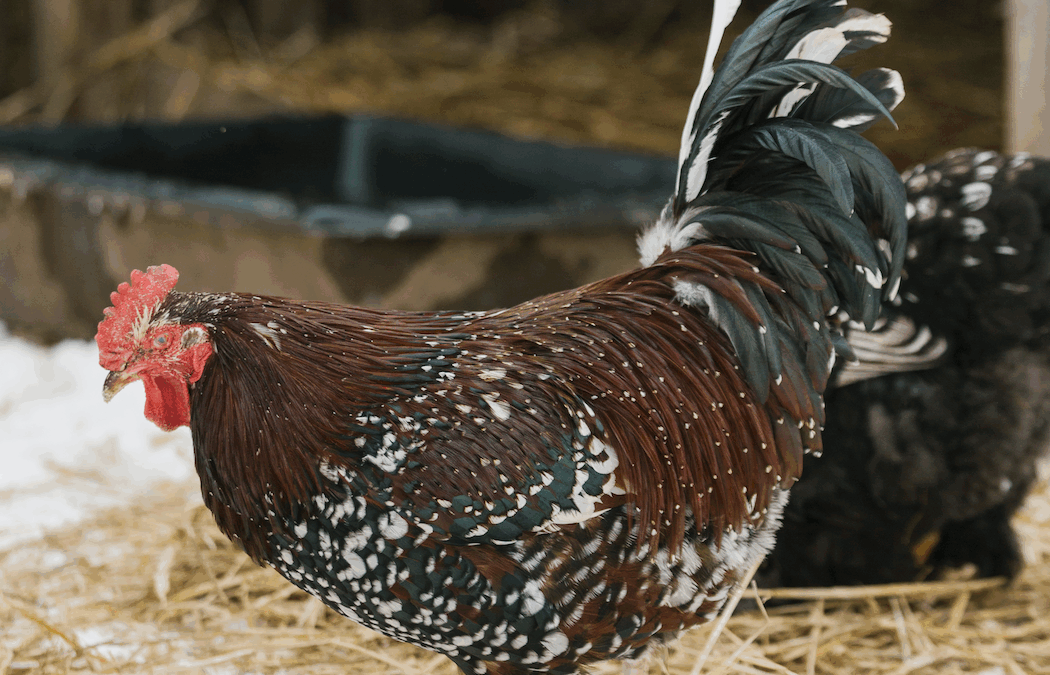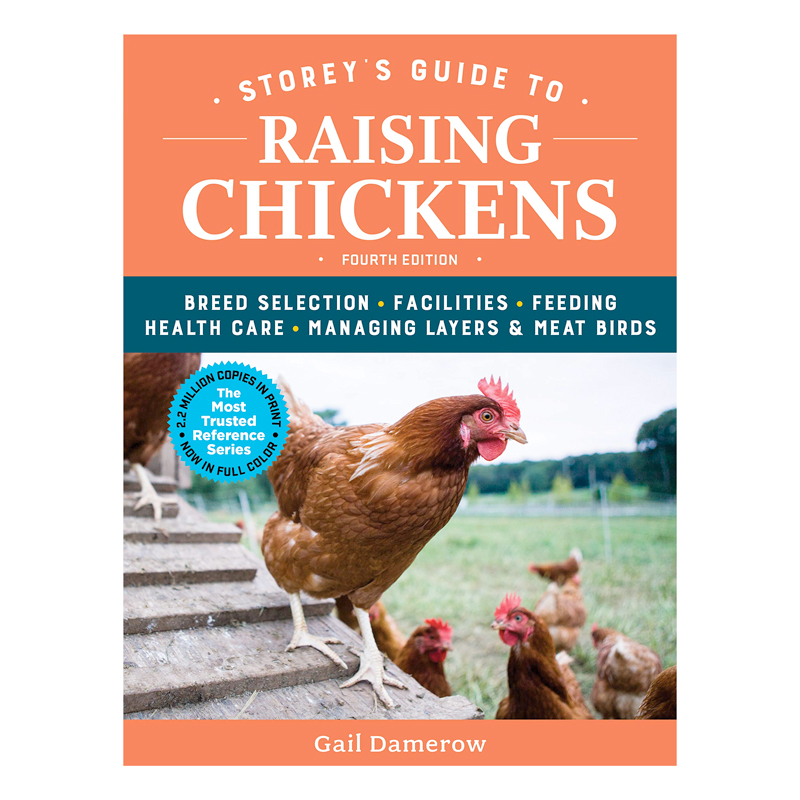Whether or not to keep a rooster in the flock can be a challenging decision for first-time chicken owners. Continuing our interview series with Gail Damerow, poultry expert and best-selling author, we ask her to discuss the pros and cons of keeping a rooster.
What is the main purpose of keeping a rooster?
One of the main activities of chickens is to make more chickens. And you can’t make more chickens without a rooster. You need a male to fertilize the hens’ eggs so they will hatch into chicks.
Newbies sometimes wonder if they need roosters to get eggs.
No, you do not need a rooster to get eggs. Hens will lay eggs with or without the presence of a rooster. But the eggs won’t hatch unless they are fertilized.

How does a rooster fertilize eggs?
He injects sperm into a hen by pressing his cloaca against hers in a process called a cloacal kiss. During this time, the hen squats and the rooster attempts to balance himself on her back while grabbing her head feathers with his beak. In doing so, his claws slide against the hen’s back, sides, and wing feathers.
This process is called treading, and it can be one of the drawbacks of keeping a rooster. A hen that is mated often will eventually lose feathers, and may then develop scratches or wounds.
Can you do anything to prevent damage to hens?
Yes. You can do a few different things to minimized the problems created by treading. For starters, keep the rooster’s toenails trimmed.
Also, as soon as a hen starts missing feathers because of treading — or even before feathers go missing — outfit the hen with a mating saddle to protect her from damage during breeding season. After the flock molts in the fall, and the hens are fully feathered, the mating saddles should be removed.
Yet another option is to house the male in his own private quarters for part of the time. The average duration of fertility from each mating is about 10 days. So you could, for instance, alternately let the rooster in with the hens for a few days, then confine him for a few days.
Aside from fertility, what is another reason to keep a rooster?
A rooster helps the flock maintain social cohesion. He is typically the highest chicken in the pecking order. That means he is able to somewhat control the flock to keep things running smoothly. For instance, he’ll likely step in and stop two hens from squabbling.
He also watches for predators and other dangers. If he detects the approach of danger, he will alert the other chickens.
Is there any way to keep a rooster from crowing?
Not that I’ve ever heard of. Decrowing surgery is expensive, extremely risky, and not always successful, therefore few veterinarians will agree to perform the operation.
You can get a no-crow collar that works by limiting the rooster’s ability to stretch his neck, thereby reducing the volume and frequency of crowing. But it doesn’t completely stop the crowing. Plus, getting the collar tight enough to discourage crowing could end up strangling the bird.
However, there are other ways to keep a rooster from stretching his neck for an all-out crow. For example, at night you could put him in a ventilated box, pet carrier, or cage. The container must be small enough to prevent neck stretching. Keeping the container away from light also helps. But when you let the rooster out during the day, he will still occasionally crow.

People often complain about mean roosters.
Many roosters are friendly, but some can get pretty aggressive. It usually starts as the bird reaches maturity and testosterone kicks in, causing him to become more protective. He then might target certain things he feels are a threat, such as baggy pant legs, floppy chore boots, or a new feed bucket.
So you need to convince the rooster that these things are not a threat. Since he is most likely to aim at your lower legs, hold up your booted foot. Not only will the boot deflect the brunt of the attack, but the rooster will see that doesn’t fight back and therefore is not a threat.
If the rooster takes exception to something you’re carrying, like a feed bucket, put it down so he can examine it. Again, since it doesn’t fight back, it’s not a threat. Making simple changes in how you do things often can stop the aggression before it gets out of control.
Any final words about keeping a rooster?
Well, personally I wouldn’t be without one. Or more. Among other reasons, the male often has different colored plumage from the hens. He therefore makes the flock more interesting and aesthetically pleasing. I keep Bielefelders and I’m frequently asked if the flock has two different breeds.
Additionally, a rooster’s personality differs from the hens’. My silkie rooster dances circles around me when I go out for morning chores. My Ameraucana rooster follows me around while “talking” up a storm. In my opinion, keeping a rooster adds a fascinating dimension to any flock.

Gail Damerow has been keeping chickens for nearly 50 years and has written several books about them including Storey’s Guide to Raising Chickens, The Chicken Health Handbook, The Chicken Encyclopedia, Hatching and Brooding Your Own Chicks, and What’s Killing My Chickens. For more about Ms. Damerow, visit her blog at GailDamerow.com.
Gail Damerow’s headshot courtesy of Kathy Shea Mormino.
Image of a Salmon Faverolles rooster courtesy of Coffee with the Chicken Ladies.
Cover image and image of a rooster with hen courtesy of Nina Mullins.




